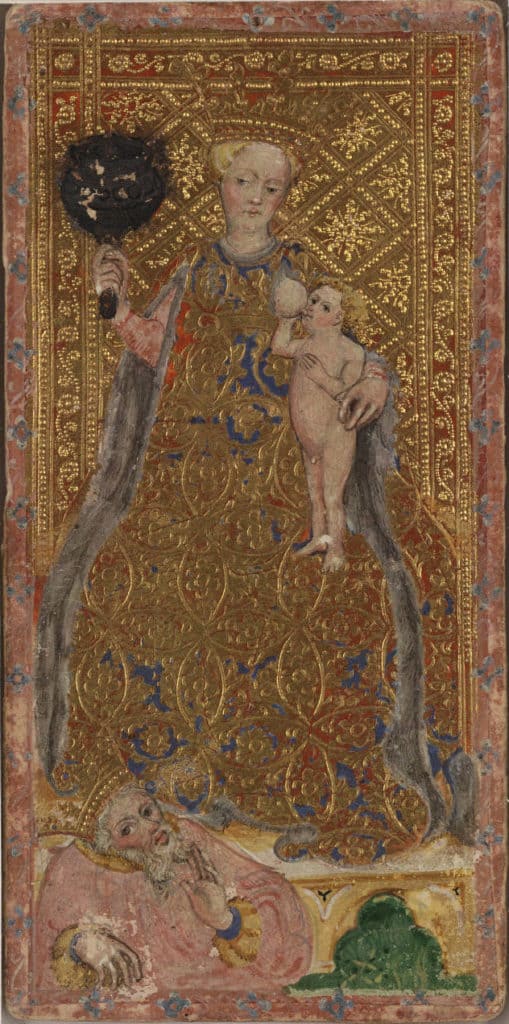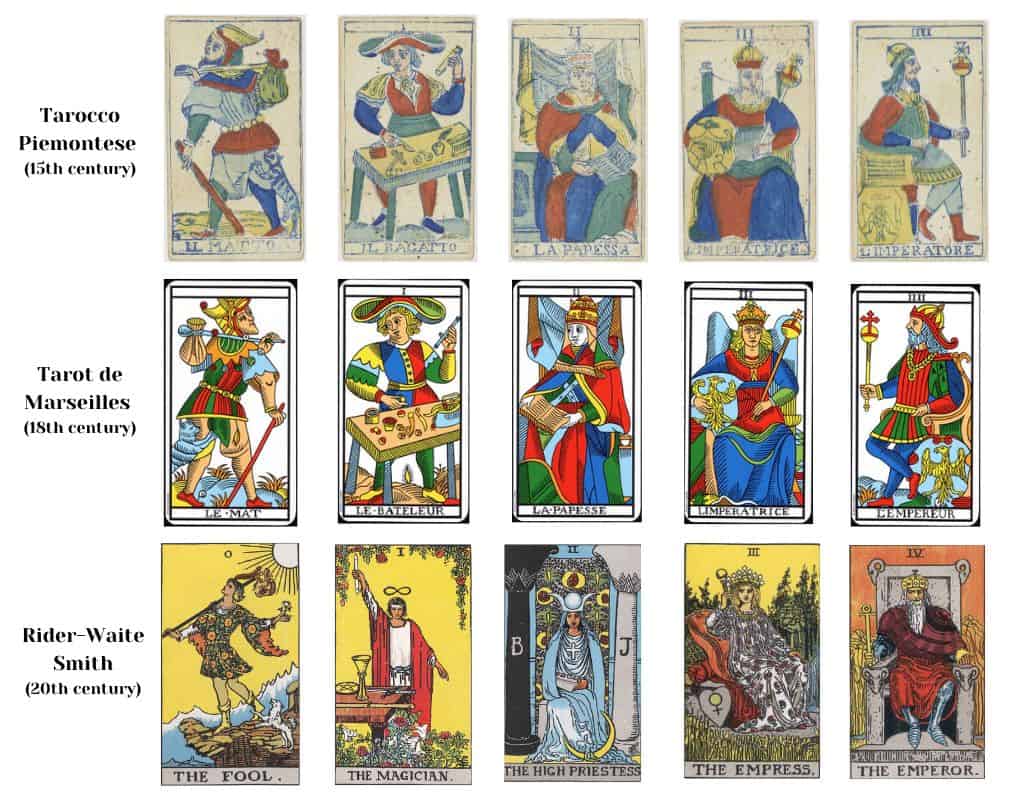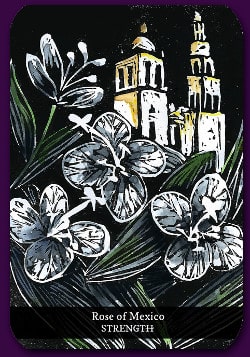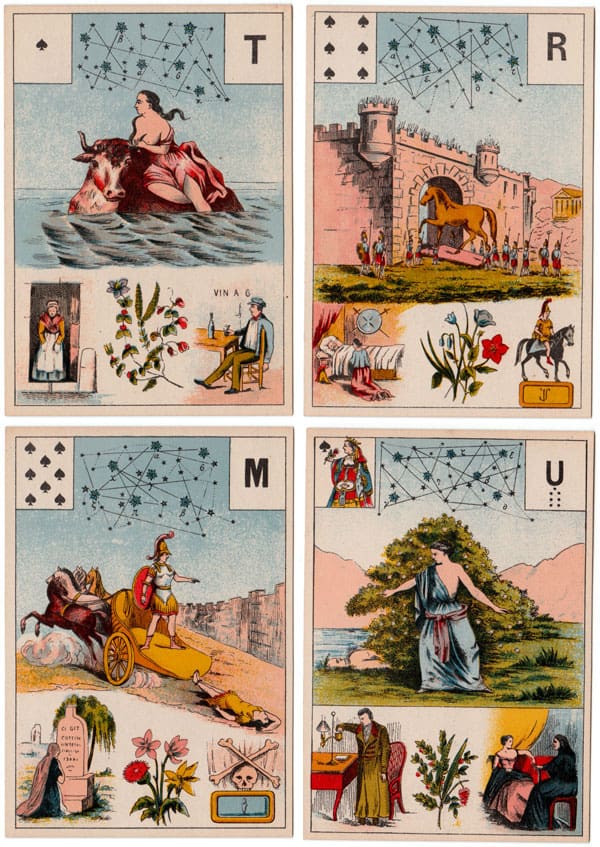Do You Wonder if Tarot and Oracle Cards are the Same?
When you’re first starting out with cartomancy, it can be overwhelming to figure out what to get and what to learn. One of the biggest misconceptions to newcomers is the difference between oracle cards vs. tarot cards.
These two systems of cartomancy offer unique and varying perspectives which wholly depend on the kind of questions you’re asking and the type of system that allows you to tap into your intuition in the easiest way. Read on to learn more!
What is the Difference Between Oracle Cards and Tarot Cards?
The main difference between oracle cards vs tarot cards is their structure. Tarot cards will always have the same number of cards and the same suits (although the names of the suits may very depending on the artist).
Oracle cards are structured as affirmations, yes/no cards, they have special themes like greek goddesses, angels, Celtic, etc. Oracles systems are created entirely by the artist that develops them, so each style, theme, and message is unique deck to deck.
Tarot Cards
Tarot cards can also vary in style, theme, and message. However, most tarot decks follow the same system. This is the main difference for oracle cards vs tarot cards.
Each tarot system consists of 78 cards. Twenty-two of those cards are Major Arcana and the remaining 56 are Minor Arcana and Court Cards.
Correspondingly, each ‘section’ of the deck relates to different themes in life. The Major Arcana are life lessons and big topics. Minor Arcana cards are day-to-day moments. Court Cards are archetypal people at different stages of life.
Typically, tarot cards are also a miniature version of the hero’s journey, or some derivation of conscious evolution depending on the artist who made it. When you lay the cards in order, you’ll find that there’s a gradual transformation of the characters in the cards.
This is especially noticeable in the Major Arcana, and represented more subtly in the Minor Arcana.
Choosing a Tarot deck can be difficult because you need to resonate with the theme of the deck and the imagery, and you need to be able to study the cards consistently in order to read them.
What Religion do Tarot Cards Come From?
Tarot cards do not originate from any one religion.
Instead, they are a cumulation of multiple philosophies, theologies, and spiritual practices such as Jewish mysticism (also known as Kabbalah), Hermeticism, Gnosticism, Ancient Egyptian religion, and even Eastern traditions such as Tantra and I Ching.
Ultimately, tarot is an amalgamation of all spiritual knowledge and ancient wisdom. That’s a big statement, I know.
With its rich symbolism, ease of application to a variety of cultures, and its innate connection to the soul as a medium for translating macrocosmic principles into real-time messages, the tarot functions as a repository of occult practice in the modern day.
One can dive deep into any one card and get lost in a rabbit hole of information.
Color meanings, astrological correspondences, essential elements, and more – the breadcrumbs on the cards lead us to quintessential and fundamental truths about who we are and what this crazy universe is all about.
Who Created Tarot?
The origin of the cards is as mysterious as their use and symbolism. Most scholars agree that the first known use of tarot cards was in the mid-15th century as a deck of playing cards in northern Italy.
However, due to the game’s complicated nature, the tarot may have evolved much earlier. Whether or not there are more ancient origins to the cards themselves is yet to be discovered.
Yet, how did the cards obtain this mystical mirror-of-the-soul status?
The 15th century is characterized by the Early Renaissance period: a resurgence of philosophers, artists, and renewed interest in Ancient Greek texts marked this time as one of curiosity.
Florence, where some of the first tarot decks were created, was the cultural capital of Italy. A great change occurred during this period, too, with the rising merchant class and eventual transition away from feudalism.
With increasingly wealthier citizens came art, elevated social status, and, more importantly, freedom.
New philosophies, the practice of alchemy, art exploring Christian and Greek symbolism and mythology, and an overall rebirth of how people viewed the universe and the daily doldrums contributed to the essence of this period and, consequentially, the tarot cards.

Many early decks feature richly robed Kings and Queens, decadent attention to detail, golden backgrounds, and expensive colors. With the introduction of the 21 Trump cards (also known as Major Arcana), came carefully wrought symbols influenced from that time period.

Not much has fundamentally changed since the original cards were created, which beckons the question: why?

Perhaps with the influence of Greek mythology and a resurgence of philosophical inquiry through Hermeticism, renaissance men of that time were touching pieces of ancient wisdom left behind by our predecessors.
More on that in another post.
Are Tarot Cards Evil?
Before its occult use, playing cards were denounced by the Church due to gambling.
Later associations of the tarot with occult use (circa. 1783) further alienated the cards against the Church. The Bible condemns witchcraft in Deuteronomy 18:10-11:
There shall not be found among you any ... that useth divination, or an observer of times, or an enchanter, or a witch, or a charmer, or a consulter with familiar spirits, or a wizard, or a necromancer.
This is a battle as old as time. Rooted in fear of the unknown, condemnation of magic and the occult has been interwoven in the annals of Christian history since humanity’s expulsion from the Garden of Eden.
I am in no way discrediting Christianity. It is my view that the Bible is an extension of ancient belief systems, rewritten to fit the worldview of the time. There is much to be appreciated in the Bible’s rich symbolism.
Ultimately, tarot is what you choose to believe in. The cards are, after all, pieces of paper with ink. The messages that lie within them are only a reflection of what you are and what meaning you accredit them.
Oracle Cards
Oracle cards are typically unique to the artist that creates them. They might have 10, 20, 30, or 40 cards. Some oracle decks have 100 cards! It all depends on the messages that you want to receive.
Each oracle deck will have its own unique system, different meanings, varying cultural influences, and symbolism. Usually, oracle cards will have a word or phrase representing the card’s meaning directly on the card (examples below).


Oracle cards tend to have stand alone meanings, and their guidebooks are correspondingly lengthy.
Choosing an oracle deck depends on what you enjoy and find meaningful in your life. You can find an oracle with any theme: do you like Greek Mythology? Eastern philosophies? Angels? There’s probably a deck for it.
Are Oracle Cards Magic?
Thanks to Jean-Baptiste Alliette, a tarot researcher and magician, the esoteric application of tarot became what is known today as cartomancy.
Influenced by Alliette’s work, famous cartomancer and fortune teller Marie Ann Lenormand used standard playing cards for her work, as well as Alliette’s own tarot deck, The Grand Etteilla. It’s no wonder tarot, and oracle decks are so closely intertwined.
Lenormand was known to be a member of the Society of Mercurii, an occult organization that revived astrology and other occult science practices in the 20th century.

Years after her death in 1845, Lenormand’s legendary status as fortune teller and mystic gave rise to the very first oracle deck, the Grand jeu de Mlle Lenormand. The deck consists of 54 cards (as opposed to the 78 of the tarot), and was heavily influenced by Greek mythology.
The Grand jeu de Mlle Lenormand was sold with five books, each detailing divination through various mediums: astrology, numerology, and cartomancy.
In 1846, another oracle deck consisting of 36 cards appeared, called Le Petit Lenormand. This deck persists today as the quintessential Lenormand cards.
Le Petit Lenormand became the foundation for the structure and function of oracle cards. With simple and iconic symbols, reading the cards is as simple as associating a word with the image.
Despite their simplicity, oracle cards are no less capable of mirroring macrocosmic principles than tarot.
What do Oracle Cards Tell You?
Depending on the deck you use, oracle cards can tell you anything from a general theme, to a specific answer. More often than not, oracle cards have a single word assigned to each card with a guidebook that details insights derived from that word based on the deck’s theme.
For example, if you have a Greek deck and you pull a card with Aphrodite on it, the word associated with Aphrodite is commonly “love”. The guidebook may elaborate on Aphrodite’s mythology, and other things she may represent.
As opposed to tarot, oracle cards are meant to be straightforward question-and-response readings. Where tarot cards can provide details and specificity, oracle cards offer overviews and generalizations.
If you want a yes or no answer, an oracle card will tell you Yes, or No. A tarot card will tell you why.
How to Choose an Oracle Deck
Tap into oracle decks that feed your curiosity. It’s important to choose cards that you can resonate with. If you love botany, decks with flower symbolism will give you the clearest answers.
It’s as easy as that – investigate what you like. What ignites your soul? What colors make you happy? Do you resonate with angels? Do you love ancient Egypt? There’s a huge variety of oracle decks for any mythology, theology, and preference.
Which One Should I Use?
When you’re considering doing a reading with oracle cards vs tarot cards I encourage you to consider what type of message you want to receive.
If you’re looking for a clear cut yes or no answer, or specific guidance in a situation, then oracle cards are better. If you need insight into people, situations, and feelings, then tarot would be a solid choice.
The list below is a general guidance. Ultimately it’s up to you.
Use Tarot For
Use Oracle For
- Insight into people in your life
- Self inquiry
- Shadow work
- Spreads
- Divination
- Astrological events
- Specific messages
- Clear cut yes/no
- Affirmations
- Messages from spirit guides
- Meditations
- Spell work
Tarot AND Oracle Cards: Can I Use Both?
Absolutely. Indeed, with their interwoven history, tarot and oracle cards originate from the same esoteric history. Despite differences between their systems, when used together they can provide critical context to your reading.
When you’re using them together, keep in mind that they are best used in a spread. The reason is spreads have positions with a pre-specified insight into the question at hand.
When a card lands in that position, you can more easily infer what the card says about your query.
Happy reading! 🙂
